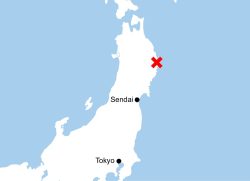Evacuation of The Vulnerable in Disasters: Consider Ways to Prevent Delays in Escaping, Related Deaths
16:29 JST, August 25, 2024
Many people likely have realized the importance of disaster preparedness after a special advisory was issued that urged people to be cautious about a possible Nankai Trough major earthquake. It is hoped that necessary preparations will be made swiftly to prevent casualties.
A massive tsunami is expected to reach some areas that are subject to such a mega earthquake advisory in a few minutes. To save lives, prompt evacuation is essential.
Residents, schools, businesses and others in local communities need to act in unity and conduct drills repeatedly. Steady and repeated efforts should help reduce damage from disasters.
Particularly, a major issue is likely to be how to save the elderly, the disabled, small children and other vulnerable people who need help evacuating during disasters.
The elderly accounted for about 60% of those killed in the Great East Japan Earthquake. In some areas, the mortality rate of those with disabilities was twice the rate of all residents. The higher figure is believed to be partly attributable to delays in escaping the disaster. A system to support the vulnerable in disasters is indispensable.
The Basic Law on Disaster Management obliges local governments to make efforts to formulate their evacuation plans so that they take into account the individual circumstances of vulnerable residents. These plans are intended to confirm in advance who will provide support and where they will evacuate to in the event of an emergency.
However, only 9% of all local governments have finished creating these plans due to such reasons as a shortage of people capable of extending support. Local governments should not handle this matter alone. It is hoped that they will work together with a wide range of entities, such as local community associations and welfare organizations, to build a community-wide cooperative system.
It is also important to ensure that the whereabouts of those in need of support are known, and that vulnerable people and their families are not isolated.
To this end, it is likely to be effective to hold community events to promote disaster preparedness to deepen interaction among residents. Elderly and other vulnerable people are also encouraged to actively participate in such events and make efforts to build relationships in which they can ask for help without hesitation in the event of a disaster.
If a major earthquake occurs, a prolonged evacuation period is expected. The risk of disaster-related deaths must be reduced by preparing the living environment for evacuees.
Evacuation facilities such as gymnasiums where people are forced to sleep in crowded conditions could be harmful to the health of even young people. In Japan, questions often have been raised over poor conditions in evacuation shelters.
In Taiwan, which was hit by a powerful earthquake in April, tents and hot meals were provided to those affected shortly after the earthquake. Local governments reportedly cooperated with private companies and divided up responsibilities in the relief effort. Japan should strengthen its measures by referring to such overseas cases.
Welfare shelters are supposed to be set up for those in need of care, but in the case of the Noto Peninsula Earthquake, facilities designated as welfare shelters were also damaged and were unable to fulfill their intended role. In preparation for widespread damage, it is also necessary to consider wide-area evacuation beyond the jurisdiction of local governments.
(From The Yomiuri Shimbun, Aug. 25, 2024)
"Editorial & Columns" POPULAR ARTICLE
-

Artificial Intelligence Expands Possibilities for Foreign Language Learners
-

Build Intellectual, Physical Strength, As Well As Communicative Power / Japan Should Move from Beneficiary to Shaper of World Order
-

Global Economy in Turmoil: Prevent Free Trade System from Going Adrift / Risks to Financial Markets Must Be Heeded
-

Japan-China Strain Set to Persist as Beijing Officials Self-Interestedly Bash Tokyo; Takaichi Unlikely to Back Down
-

French and German Ambassadors to Japan Call for Democracies to Unite in Defense against Russian Disinformation
JN ACCESS RANKING
-

As Chinese Tourists Shun Japan, Hotels and Stores Suffer
-

Osaka-Kansai Expo’s Economic Impact Estimated at ¥3.6 Trillion, Takes Actual Visitor Numbers into Account
-

Japan Govt Adopts Measures to Curb Mega Solar Power Plant Projects Amid Environmental Concerns
-

BOJ Gov. Ueda: Highly Likely Mechanism for Rising Wages, Prices Will Be Maintained
-

Economic Security Panels Debate Supply Chains, Rare Earths; Participants Emphasize Importance of Cooperation Among Allies




















